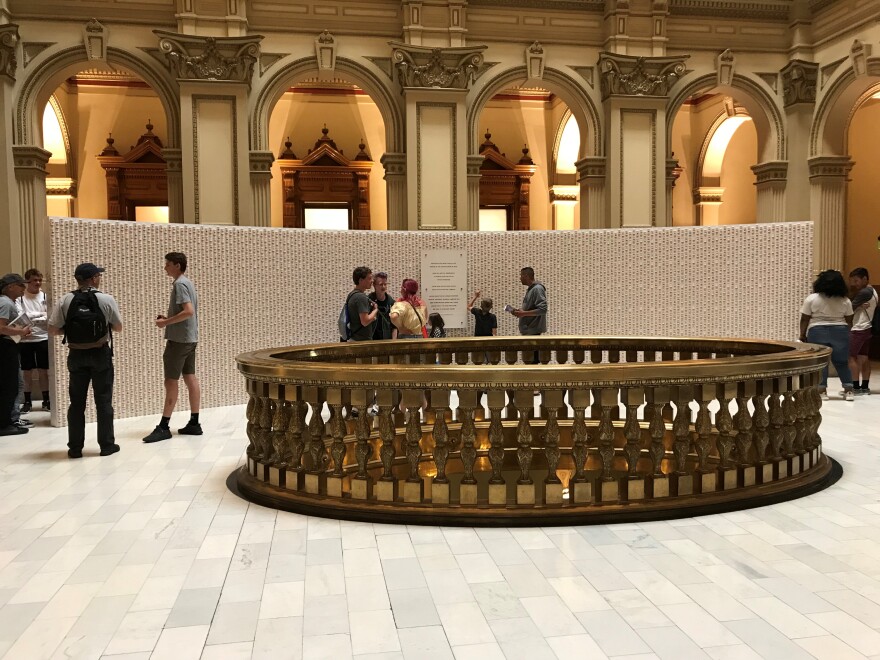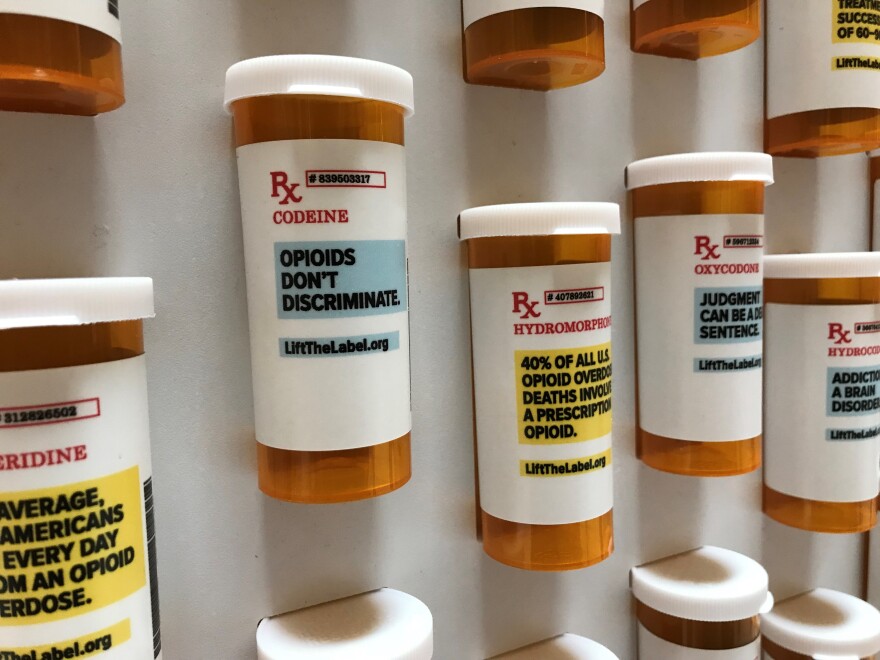Scott Kindel lives in Louisville, Colorado with his wife and 2-year-old son. He began drinking at 12 before moving on to his mom's prescription pain pills at 14, and then finally, heroin. Kindel's addiction to opioids almost killed him
"I'm driving on I-70 with my right arm sticking out as he shoots me up for the first time as I'm going 60, 70 miles an hour down the road," he said. "And I just immediately pass out."
Luckily, Kindel came to right before he crashed his car into a yellow barrel at an exit ramp. But it wasn't until he was 26 and had served four months in jail that he decided to get sober.

Now 32, Kindel is the director of admissions and aftercare at the Foundry Treatment Center. His job is to help other people with opioid addiction find the right treatment program.
"The shame and guilt that's associated with addiction is again something that keeps people from getting help," he said.
Kindel and 14 other Coloradans are part of Lift the Label, a state-run public awareness campaign that aims to remove the stigma and labels that prevent people with opioid addiction from accessing effective treatment. The 15 men and women, ranging in age from 22 to 64, come from different backgrounds, but they all have one thing in common: recovery from opioid addiction.
'We want to address this opioid crisis'

In April 2017, Colorado received $15.7 million over the next two years from the federal government to address prevention, treatment and recovery for the growing opioid epidemic. The Colorado Department of Human Service's Office of Behavioral Health is administering the State Targeted Response to the Opioid Crisis Grant which includes several programs, including Lift the Label.
The Lift the Label campaign launched on May 14, 2018, with the unveiling of the Opioid Memorial Wall at Civic Center Park. The wall is 8 feet tall and 34 feet long. Attached to the front are 4,200 pill bottles, representing the 42,000 Americans who died from overdoses in 2016.
The back of the wall was left blank, so people could write messages to or memories of loved ones who have struggled with opioid addiction.
Liz Owens, associate director of communications at the Office of Behavioral Health, said real bottles were used because prescription pain pill abuse is one of the biggest reasons why the opioid crisis started.
"We know that roughly 80 percent who turn to a heroin addiction have started with prescription opioids," she said. "We want to address this opioid crisis."
Owens said a 2017 survey conducted by the Colorado Health Institute found that 67,000 Coloradans who needed access to substance use treatment weren't receiving it. Of those, roughly 59 percent said the stigma was a reason why they didn't seek help.
"We know that stigma is a huge factor in why people don't get treatment, and so that's what this campaign is aimed at," said Owens.

On the front of each bottle is one of 12 different anti-stigma messages including "Judgement is a death sentence" and "You don't have to face opioid addiction alone." The positive messages are meant to encourage friends, family members and co-workers to support those who are addicted to opioids.
"Those who suffer from opioid addiction often feel labeled," said Owens. "We need to remove that judgement and those labels that can keep someone who needs help from asking for it."
Lift the Label wants to raise awareness of a specific treatment for opioid addiction: medication-assisted treatment. MAT combines therapy and social services along with a medication, either methadone, buprenorphine or naltrexone.
Naltrexone blocks the opioid receptors, so a person can't get high, while methadone and buprenorphine are long-action opioids that reduce cravings and withdrawal symptoms.
In the early 1970s methadone maintenance programs became a major public health initiative to treat opioid addiction. The drug is heavily regulated and by law can only be dispensed at an opioid treatment program, or OTP, which has been certified by the federal government. In methadone programs, patients typically go to an OTP every day to receive a liquid dose of methadone which must be drunk in front of a nurse. This daily routine can be a deterrent for people who want to treatment.
Buprenorphine was approved by the FDA in 2002 as a less potent and more accessible alternative to methadone. The drug is prescribed by a health care provider and picked up at a pharmacy. Buprenorphine can be administered at several locations including hospitals, correctional facilities or health centers.
'I knew I could help other people'

Nathan Pierot started taking methadone in January after he became addicted to Percocet, prescribed to him for a foot injury. The 41-year-old Greeley resident is also part of the Lift the Label campaign.
"Methadone treatment is something that I really believe in. And one of the things that was the best part of my recovery was my support system and how easily and open I could talk about it," he said. "That did so much for my recovery that I knew I could help other people."

But MAT is controversial because methadone and buprenorphine are long-acting opioids. Critics say people who use them are just replacing one drug for another. But Pierot disagrees - and so do those who administer MAT.
"What we found is that stigma comes from lack of education. People just don't understand it, they fear it," said Susan Kanemasu, program director at Behavioral Health Group, a methadone center with five locations along the Front Range. "They don't know how it works so the more we can get out there and educate (the) community, the better."
According to those behind the Lift the Label campaign, methadone and other medication assisted treatments have a success rate of 60 to 90 percent. The state wants to increase the usage of MAT by at least 25 percent by end of June 2019.
For people like Pierot, increasing the availability of MAT can be lifechanging.
"I've been able to go back to work," he said. "I've taken over some responsibilities in my church. My relationship with my wife and kids is better and they notice the difference."








